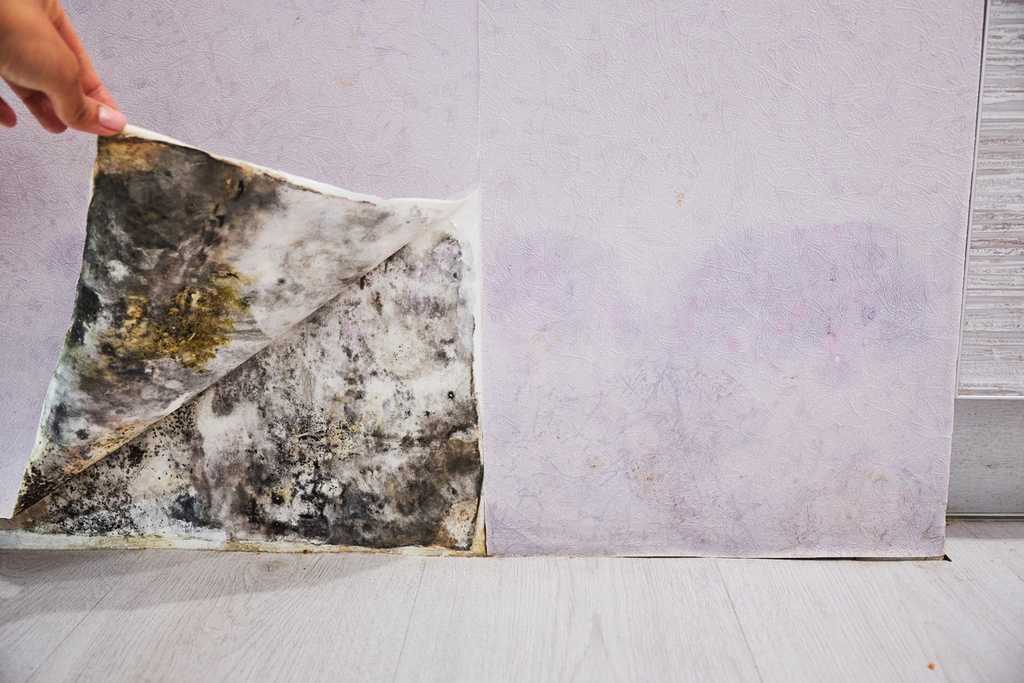Most homeowners think their insurance will automatically cover mold damage in the home. Unfortunately, mold coverage is not guaranteed by your homeowners insurance policy. Typically, your policy only covers mold damage if it's related to a covered peril. Homeowners should understand what is covered and when, as well as their responsibilities for preventing mold growth.
Types of Mold Damage Typically Covered
Whether or not your homeowner’s policy covers mold damage largely depends on the cause of mold growth. A standard policy often lists mold as an exclusion, unless under the following conditions:
- Mold is hidden within the walls, ceiling, or beneath the floors,
- Mold growth results from an accidental discharge or overflow of water or steam,
Examples of accidental discharge or overflow of water
- A burst pipe
- Overflow resulting from a malfunctioning AC unit,
- Your washing machine hose bursts,
- A fire sprinkler causing water damage
Mold can begin to form anywhere from 24 to 48 hours after an incidence of water damage, so if you’ve recently had a pipe burst or appliance malfunction, you would need to make sure the affected areas are completely dry.
While every home insurance policy is different, standard homeowner’s insurance policies protect you from a “covered peril”. In some cases, mold can grow as a result of water damage from outside forces. Whether your homeowner’s insurance covers mold in that instance depends on what caused the damage to begin with. If you have a flood insurance policy and your home is flooded or damaged due to heavy rains, a hurricane, or other acts of nature, then your policy may extend to mold coverage in those cases.
Types of Mold Damage Typically Not Covered
Where homeowner’s insurance won’t cover mold is due to negligence of the homeowner. Similar to rodent or bug infestations, mold has a reputation of being a general home maintenance issue, and the resulting damage caused by lack of upkeep or neglect. Generally, homeowner’s insurance companies won’t cover mold damage if it was caused by something that could have been prevented. Issues that could’ve been prevented include any humidity issues that were ongoing or slow leaks you neglected to fix in your home that allowed water to get in and mold to grow.
Is mold costly to remove from a home?
Mold can be a costly and dangerous issue, both because of the difficulty to remove as well as the health hazards it potentially poses to the home’s structure and your health. While overall costs are dependent on the size of the mold growth as well as the type of mold, mold damage can cost in the tens of thousands to remediate. Because of the common occurrence of mold, insurance companies have put in place a number of measures to reduce their liabilities and reduce their risk.
One of the ways is to limit the amount they will pay for damage – even if it was caused by a covered peril. Typically, insurance policies will state a maximum damage claim they will cover. So, like all types of insurance, you need to understand what your homeowner will and will not cover. If you want to purchase broader mold coverage above that amount, it can usually be added as an optional rider – which ups your yearly insurance costs.
If you live in the southeastern United States, or areas that have high humidity, you may need to include this insurance add-on to broaden your coverage to causes of mold growth that aren’t covered by your policy. If you live in Florida, New Jersey, New York, North Carolina, and South Carolina the states require insurers to provide policyholders with a certain amount of mold coverage. This could be anywhere between $5,000 and $50,000 in mold remediation coverage, regardless of what caused it. Again, check your policy to determine your level of coverage.
How can I prevent mold in the house?
The cheapest way to deal with mold is by preventing it from growing in the first place. This is especially important for homeowners in mold-prone states, or high humidity areas such as the coast. You can achieve this by regularly cleaning, ventilating and dehumidifying areas prime for mold growth, or by doing the following:
On the prevention side, you can:
- Keep the humidity in your home between 30% and 60% with air conditioners (air conditioning dries the air)
- Install dehumidifiers in areas that are prone to dampness
- Adequately ventilate bathrooms, laundry rooms, kitchens, and other areas of your home where mold may have an opportunity to grow
- Don't install carpets in damp areas such as basements or bathrooms
- Regularly check plumbing pipes and fittings to look for leaks
- Keep gutters clean to prevent the formation of ice dams in winter, which can lead to leaks
- Regularly inspect your roof—and around windows and doors—and caulk cracks that could allow water to leak in
- Properly insulate interior and exterior pipes in winter to avoid breakages or leaks
- Routinely check appliances and hot water heaters for signs of leaks
At the end of the day, you need to be an informed and proactive homeowner. If you are buying a home (especially an older one) make sure you get a detailed inspection to avoid any costly surprises. Be proactive, and do the necessary maintenance and inspections to negate any mold growth. Before signing (or renewing) your home insurance policy, do your research on the types of mold growth covered by your insurer. This way, you’ll know what to expect when the time does come to file a claim and pay your deductible for mold damage in your home.

